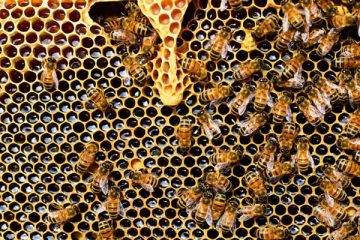Scientists worry that two species of nonnative pythons now near the Everglades could breed, yielding more aggressive offspring.
 Atlanta – In an case of real life imitating Hollywood, the US scientific community is increasingly concerned that two nonnative python breeds currently slithering free in south Florida could morph into a giant man-eating swamp coil.
Atlanta – In an case of real life imitating Hollywood, the US scientific community is increasingly concerned that two nonnative python breeds currently slithering free in south Florida could morph into a giant man-eating swamp coil.
The capture of five African rock pythons recently near an Everglades already teeming with the gentler Burmese pythons has scientists worried about so-called “hybrid vigor” – a phenomenon that occurs when interbreeding uncorks volatile recessive genes, passing traits such as aggression onto the offspring. Think Africanized bees.
The two species have interbred in captivity. While Burmese pythons aren’t known to eat people in their native habitat, the African rock python, unfortunately, has been known to do just that.
The rock python “is mean right out of the egg, and they don’t ever tame down,” says Kenneth Krysko, a senior biologist at the Florida Museum of Natural History.
Whether African rock pythons and Burmese pythons could produce fertile offspring remains a big question. But the looming possibility of “hybrid vigor” between nonnative species means the Everglades are turning into a herpetologist’s version of Dr. Frankenstein’s lab.
“It’s a big petri dish,” says Kevin Enge, an invasive species expert with the Florida Fish and Wildlife Conservation Commission in Gainesville. “You keep introducing things and, yeah, you don’t know what’s going to turn out.”
This summer, Florida began a python bounty hunt after the population of illegally introduced Burmese pythons exploded and their range expanded. So far, 18 snakes have been captured under the new hunt, which got approval from the US Department of Interior after a toddler was killed by a released python this spring.
Critics including Mr. Krysko say that the state is not doing enough to crack down on those who release snakes against the law. But Mr. Enge says the law is basically “unenforceable” since it’s practically impossible to catch people in the act. Moreover, lawmakers have for years tried to ban exotics, but the rare pet industry, much of which is based out of Miami, is a powerful economic force that has so far held off efforts at import reform.
Banning exotics could also drive the trade underground and actually result in more releases as owners try to stay within the law, experts say.
A 1994 report by the Florida Department of Environmental Protection first raised alarm about an explosion of invasive species in the Sunshine State – driven by the welcome conditions of Florida’s subtropical interior and Miami being one of the major import points for exotic animals to the US.
That report pointed to specific concerns about the African rock python, but doubted whether it could breed in the wild.
New evidence is throwing doubt on that analysis.
The five African pythons caught or sighted recently include a 12-foot adult specimen, a hatchling, a two-foot snake that had eaten a common grackle, a large snake that had eaten a backyard turkey, and a large pregnant female run over by a car.
The wide variety of age and size of the snakes is worrisome, and is the main reason why some scientists believe the snakes have already found their way into the national park. But trying to forecast whether the two species will breed and what the result would be is virtually impossible.
“Are the offspring meaner or more resilient in the wild? I have no idea,” says Krysko.
The state has dispatched bounty hunters to the 1 square mile area where all five snakes were found. “It’s definitely habitat they can populate, and I’m sure they could easily probably eventually hook up with the park,” says Enge.
Whether the bounty hunters can stop the invasion or not, such targeted hunts are likely to epitomize what creature control will look like in Florida going forward, Enge says. The state is attempting to protect people and sensitive wildlife areas such as a wading bird rookeries from invasive snakes.


















